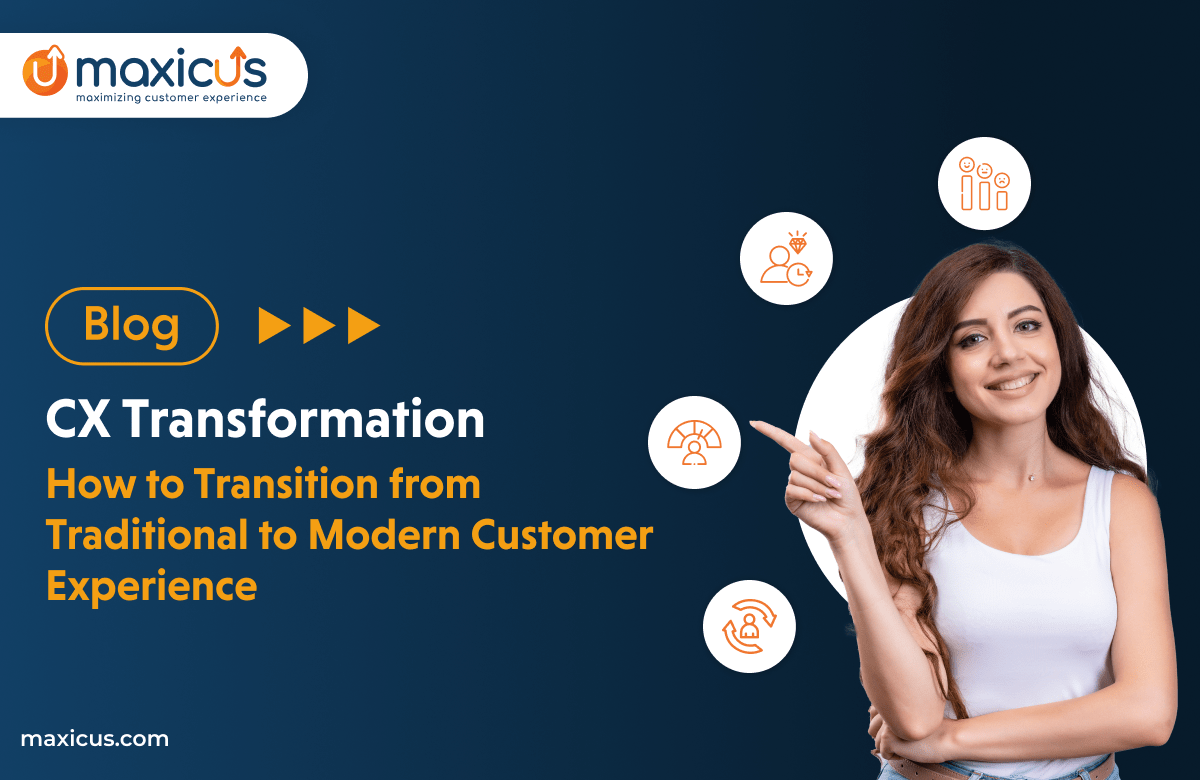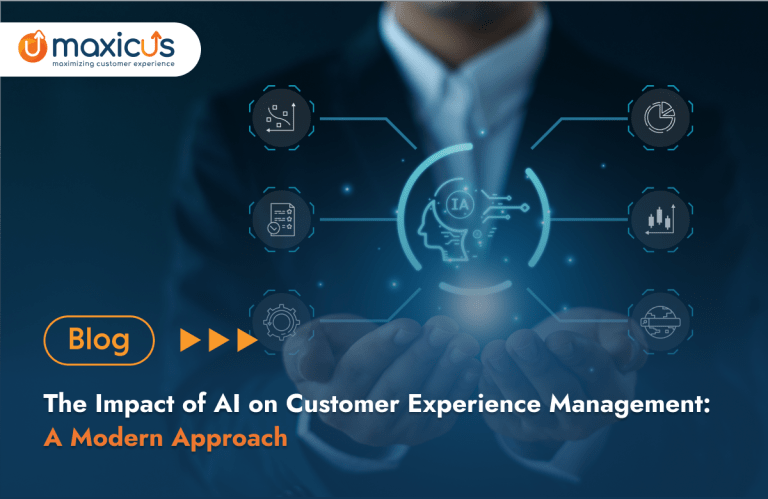CX Transformation: How to Transition from Traditional to Modern Customer Experience
Companies must continually enhance their customer experience (CX) to meet and surpass consumer expectations in the digital era. Companies must adopt the modern customer experience transformation to stay competitive in a changing business environment. A successful transformation requires embracing new technology, but organizational cultures and operational methods must be rethought to be genuinely customer-centric.
This blog dives deeply into the Transition to Modern CX process, providing insightful advice and emphasizing critical best practices for a smooth Transition to Modern CX framework. Businesses can ensure that they not only stay up with changes in the market but also establish new benchmarks for consumer involvement and pleasure by comprehending and putting these revolutionary tactics into practice.
Understanding the Need for Customer Experience Transformation
To continually provide superior customer service, a company has to reevaluate and fundamentally alter its customer interactions. This process is known as customer experience transformation. Traditional CX’s reactive, one-size-fits-all solutions fall short of customer needs. Modern CX is proactive, personalized, and integrated across digital and physical touchpoints.
A study shows that 86% of consumers will pay extra for excellent service. customer experience transformation focused companies increase revenue 4–8% faster than similar markets. The numbers indicate how CX may affect a company’s profitability.
Transition to Modern CX: Embracing Digital Innovation
Transition to Modern CX requires embracing digital tools and technologies to elevate customer interactions. Here are key strategies to consider:
- Putting New Technologies to Use
Understanding client preferences and behaviors using machine learning, AI, and data analytics may enable personalized experiences. Chatbots and virtual assistants can aid 24/7, enhancing output and customer happiness.
- Enhancing Multichannel Approaches
Today’s customers communicate with companies via a variety of platforms. Providing a smooth and uniform experience on all platforms, including social media, mobile applications, and in-store interactions, is essential. An integrated strategy offers a comprehensive picture to satisfy better the consumer’s demands and aids in monitoring their journey.
- Paying Attention to Client Input
Frequent gathering and examination of consumer input aids in improving the CX. Technologies that track client interactions and get instantaneous feedback might spur advancements and assist in anticipating client requirements before they materialize.
Best Practices for Modern CX
To effectively manage the transition to Modern CX, here are some of the best practices for Modern CX –
- Establishing a Customer-Centric Culture
Every corporate department must work toward a customer-centric culture. It means weighing each decision in light of how it will affect the client experience. Employees may be given the necessary resources via training and development programs to provide exceptional customer service.
- Utilizing Data to Customize
Personalization is at the core of modern CX. Experiences that are distinctive and appealing to consumers may be developed using data analytics to comprehend their interests and behavior. Businesses may predict consumer demand using predictive analytics to predict buying patterns.
- Continuous Improvement
The Transition to Modern CX is an ongoing effort. It requires constant learning, experimenting, and adapting. Businesses must change their strategy to meet customer needs, keep up with new technology, and monitor industry trends.
How to Increase Customer Engagement Using Technology
The modern customer experience transformation mostly depends on technology developments to improve customer interaction. To do this, omni-channel communication systems must be set up. These let customers contact the firm via social media, chat, email, and phone. Video commerce can create immersive experiences that bridge the gap between the physical & digital world.
- Incorporating Feedback Loops
Sophisticated CX strategies need robust feedback mechanisms. They use social media listening, surveys, and user activity tracking to create real-time feedback loops, and valuable data that improve client interactions may be obtained. Using this data, businesses may make informed choices to enhance customer satisfaction and address problems before they become more prominent.
- Creating Collaborative Work Environments
Working together across departments is crucial to providing a faultless customer experience transformation. Since segregated processes may lead to disconnected client experiences, creating a collaborative environment where information and plans are shared across teams may enhance efficiency and consistency. CRM systems and corporate social networks are two examples of technology that could improve collaboration and communication inside a business.
- Prioritizing Security and Privacy
Digital transactions and data breaches make client data security and privacy more important than ever. Consumers expect companies to be transparent and safe. Strong cybersecurity defenses and transparent privacy guidelines defend consumers, foster a culture of trust, and improve the client experience.
- Implementing Preemptive Customer Service Techniques
Modern CX goes beyond reactive service approaches to anticipate and proactively address customer requests. Proactive service alerts, product predictive maintenance, or customized offers based on previous and current customer behavior are a few examples. Businesses that anticipate problems and address them before they exist may significantly boost customer satisfaction and loyalty.
- Emphasizing the Experience of the Worker
It’s critical to understand that great worker experiences precede fantastic customer experience transformation. Motivated and happy workers deliver better customer service. Happier workers may have more productivity, lower turnover, and better customer service.
Case Study: Maximizing CX Transformation with Maxicus
The leading provider of customer experience transformation solutions, Maxicus, shows how businesses may successfully shift to contemporary CX. Maxicus has helped companies to anticipate and comprehend customer behavior by fusing AI and data, leading to more personalized and timely engagements.
With a wide variety of services, Maxicus assists companies in implementing multi-channel strategies effectively and delivering a unified customer experience transformation across all touchpoints. Companies that place a high priority on continuous learning and plan modification are better equipped to foresee customer needs and emerging trends.
Conclusion
Modern CX is becoming more vital for organizations across all industries as we traverse the digital era. Maxicus is leading this Transition to Modern CX, showing that companies can improve customer interactions and prosper with the appropriate strategies and technology. Embracing contemporary CX means embracing new technology and creating a culture that puts customers first. Businesses may create long-term client connections and succeed by doing so.
Organizations can implement this Transition to Modern CX and enjoy a more connected, customized customer experience transformation with the proper dedication, tools, and strategy. Remember, customer experience transformation is a continual process, and being current on trends and consumer expectations can help you remain competitive.










